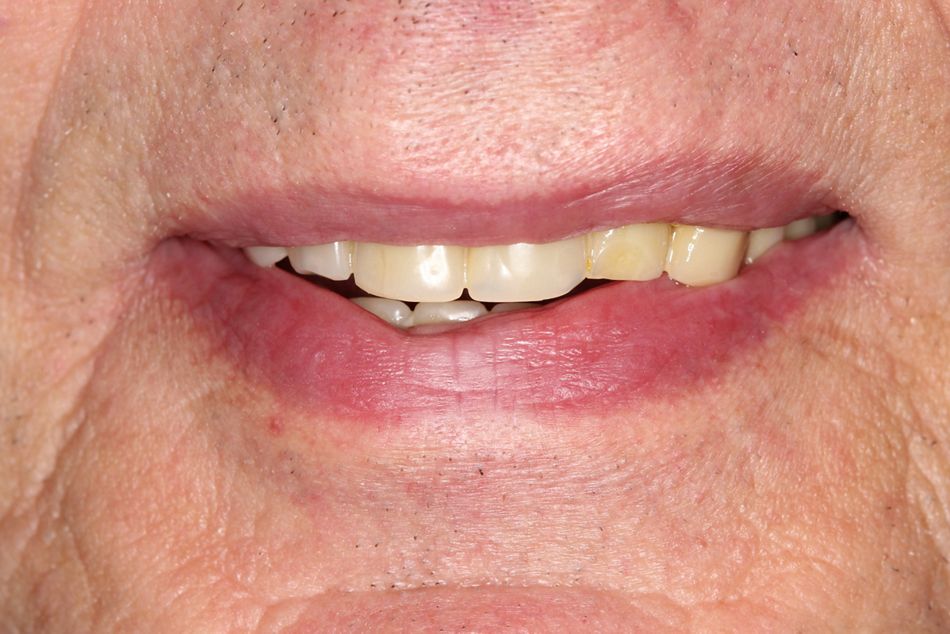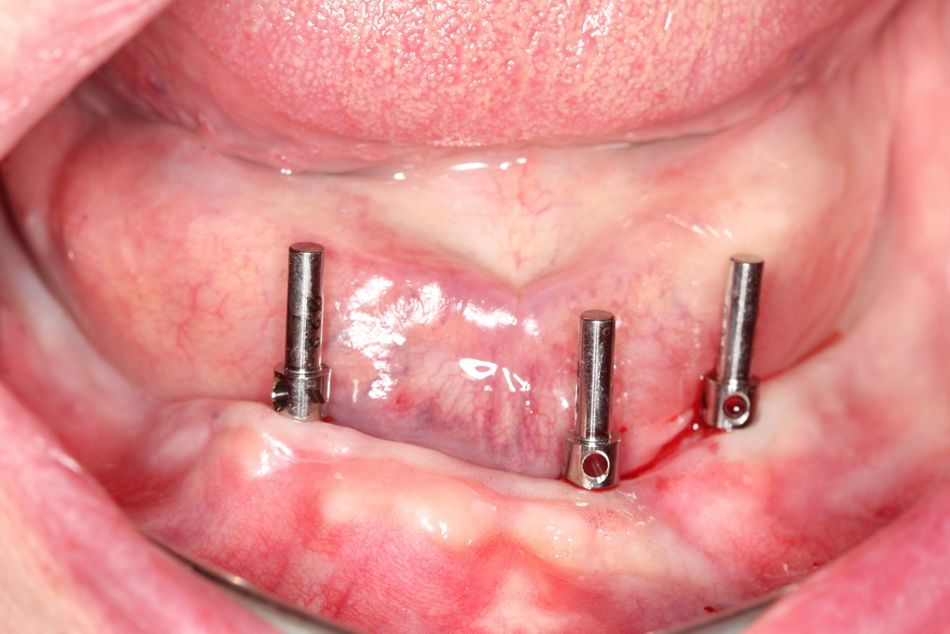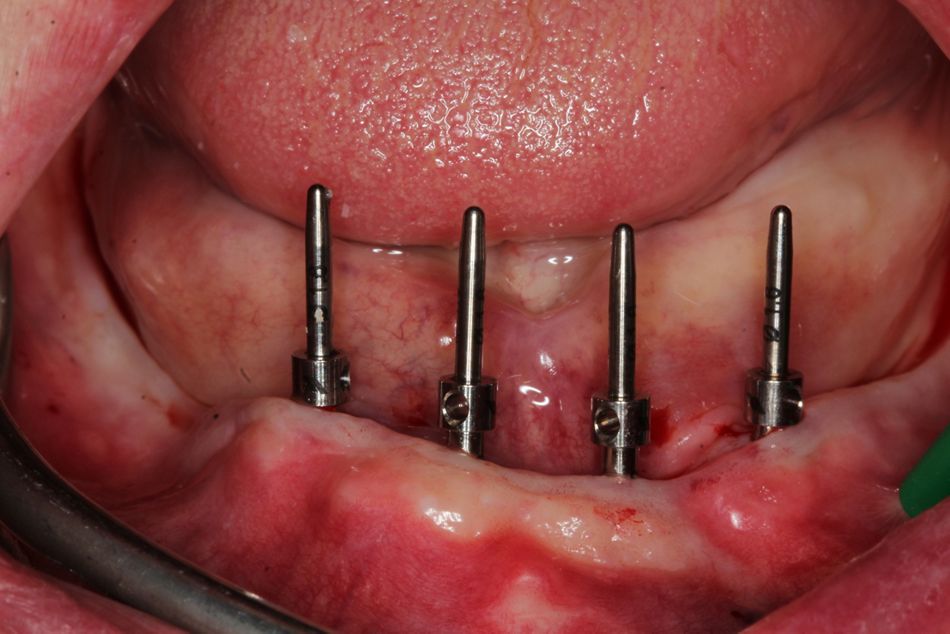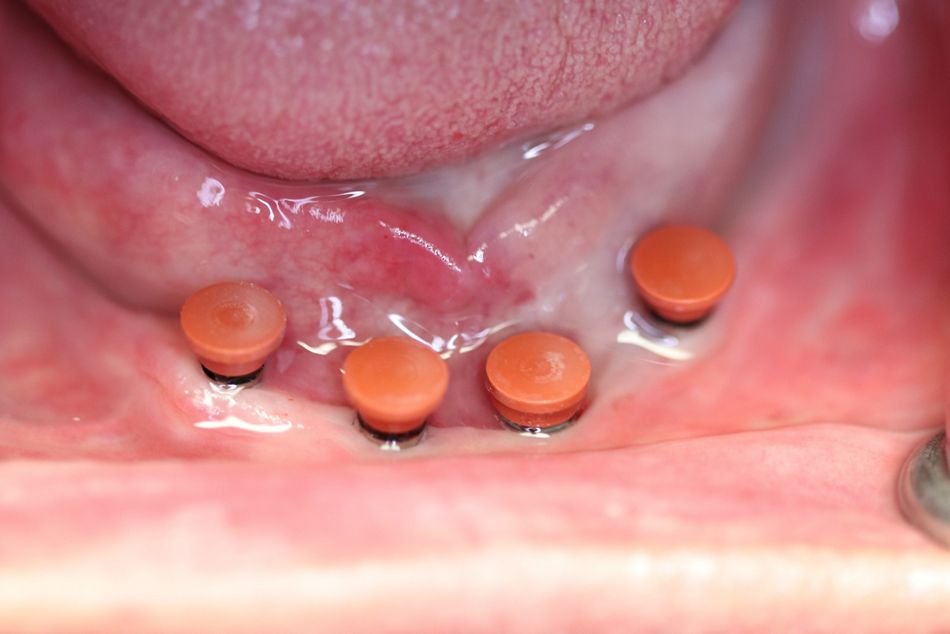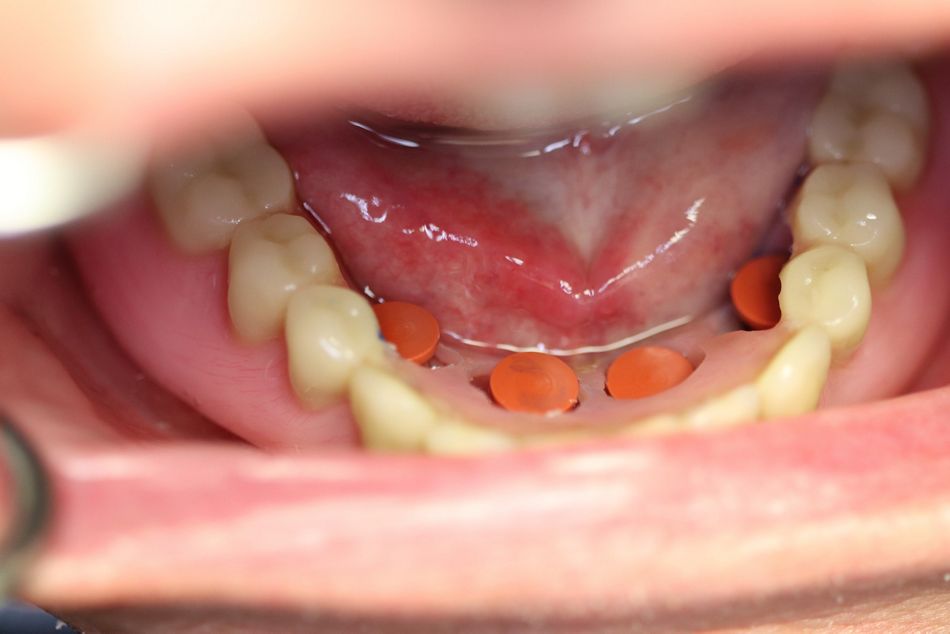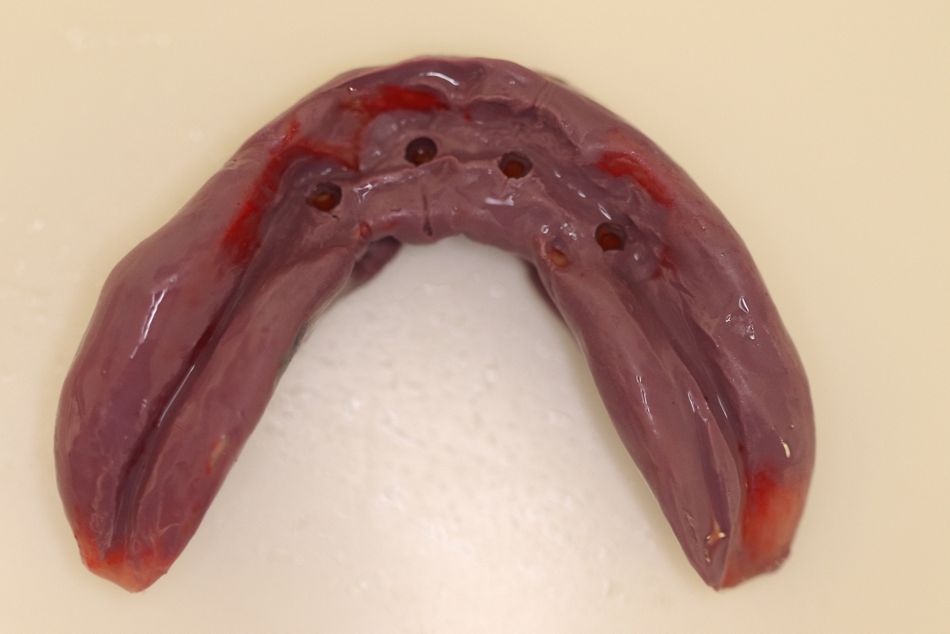Initial Situation
Since losing all his teeth due to periodontitis, this 72-year-old patient with a moderate/heavy smoking habit has been wearing a full-arch regular denture in the upper arch for 10 years and in the lower arch for two years. Although it is technically well produced, the lack of retention in his regular lower denture compromises his chewing functions. The bone is unevenly resorbed and the amount of fixed keratinized epithelium is limited compared to other areas (Figs. 1-4).
Treatment Planning
We offered the patient three treatment options: two implants in region 33 and 43 with Novaloc® abutments – but stability and retention is better with four implants in 34,32,42,44. We also discussed a fixed Pro Arch solution with four implants and a fixed restoration, but the patient has limited finances and a history of periodontitis, so cleaning could be an issue. The patient decided on four implants to support the lower denture with Straumann® Mini Implants in a flapless approach and immediate loading. A CBCT scan showed plenty of interforaminal bone 7 mm wide and at least 15 mm high (Fig. 5). Bone quality seems very dense in the CBCT scan. If the aim is immediate loading of the implants, they must be inserted with a minimum of 35 Ncm, so bone density and the corresponding drill protocol is important. Since the patient's dentures were quite new, we opted to reline the lower denture including the Optiloc® housing matrices for reliable retention to establish adequate function with a minimum of aftercare.
Surgical procedure
A flapless approach was planned since the residual bone was sufficiently wide, and a sufficient amount of keratinized epithelium was available. The mental foramen was palpated on both sides, and implant drilling was started with the needle drill in the distal sites at a safe distance from the mental nerve. Paralleling posts were used to help maintain direction during preparation of the following sites, which were evenly distributed in the space between the two distal implants (Figs. 6-14) The 2.2 mm single-use drill was used in the coronal part due to the high density of the bone (Figs. 15-20). Four Mini Implants (2.4 x 12 mm) were inserted with 35 – 45 Ncm (Figs. 21-24)The implant is a one-piece component including the Optiloc® abutment, which is even smaller than the Novaloc® abutment and requires minimal space. No suturing was necessary as it was a flapless approach. The postoperative x-ray showed good alignment of the four implants with a safe margin from the mental nerve (Fig. 25).
Prosthetic procedure
Immediately after surgery, a silicone impression was taken in the lower arch to identify the position of the Optiloc® abutments compared to the base of the prosthesis and show where to drill the space for the impression copings to make a pick-up impression in the denture to keep the bite and vertical dimension (Figs. 26-32). A second impression with the impression copings was taken in the lower arch (Figs. 33-34), analogs were mounted and a plaster model poured (Figs. 35-36). Optiloc housings were mounted on the model, and the denture was relined, polished and delivered on the same day (Figs. 37-40).
Final result
Four Mini Implants inserted in the lower jaw in a flapless technique and immediately loaded gives the patient very high satisfaction and comfort, with easy access for cleaning and low-cost maintenance of the matrices or the acrylic teeth. The patient experienced the treatment as positive and “very professional”. Labwork by Rene La Cour, Aarhus, Denmark
Conclusion
Straumann® Mini Implants are safe for immediate insertion in a healed lower jaw. Optiloc® provides reliable retention for the denture and high patient satisfaction, offering very low morbidity in terms of the procedures.

